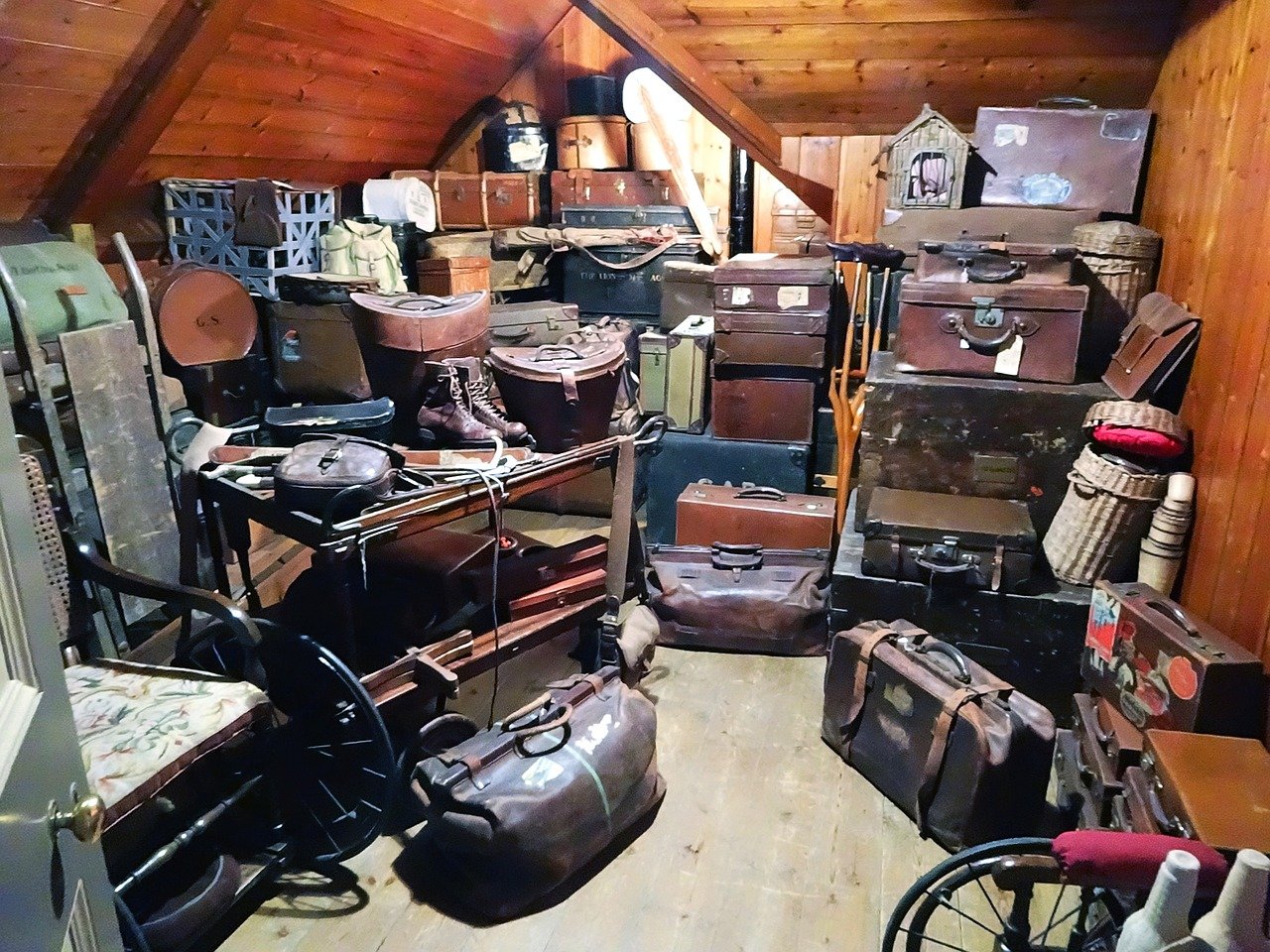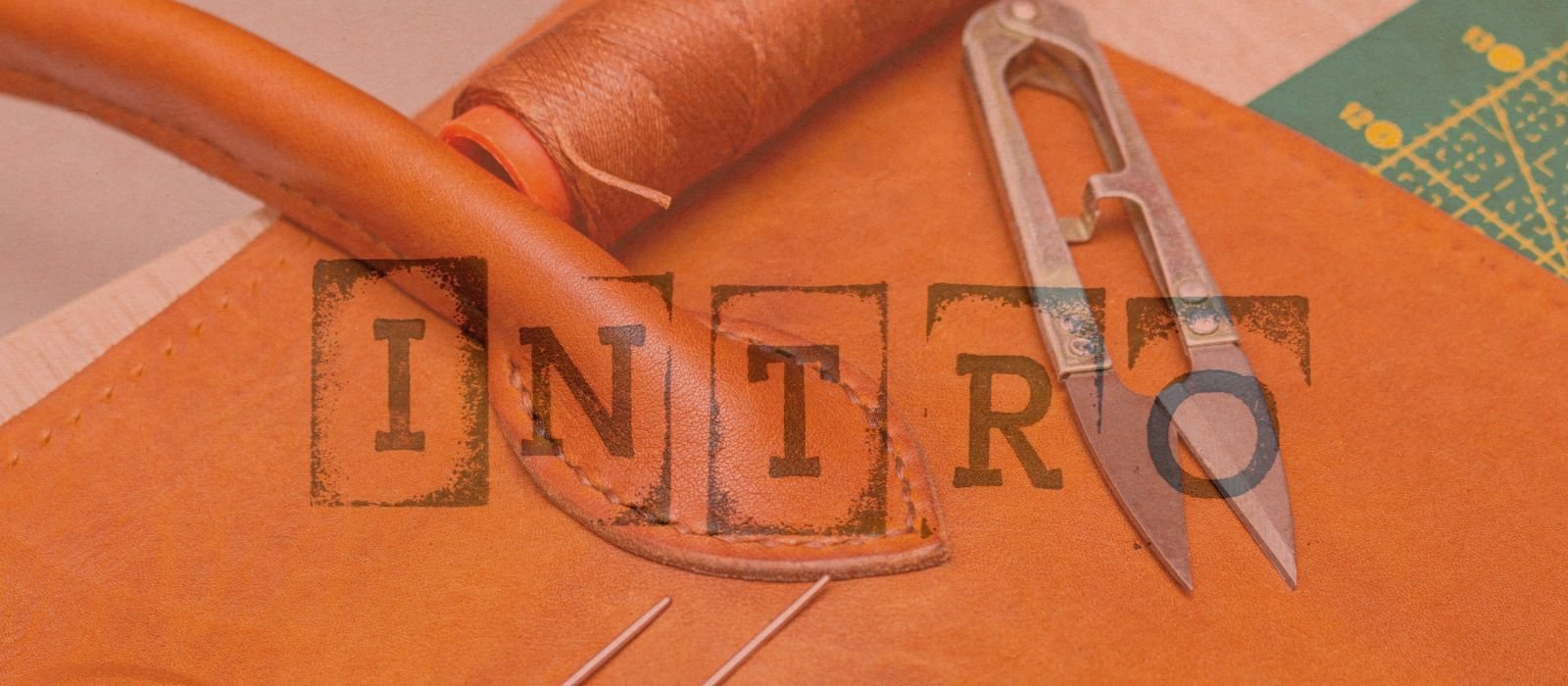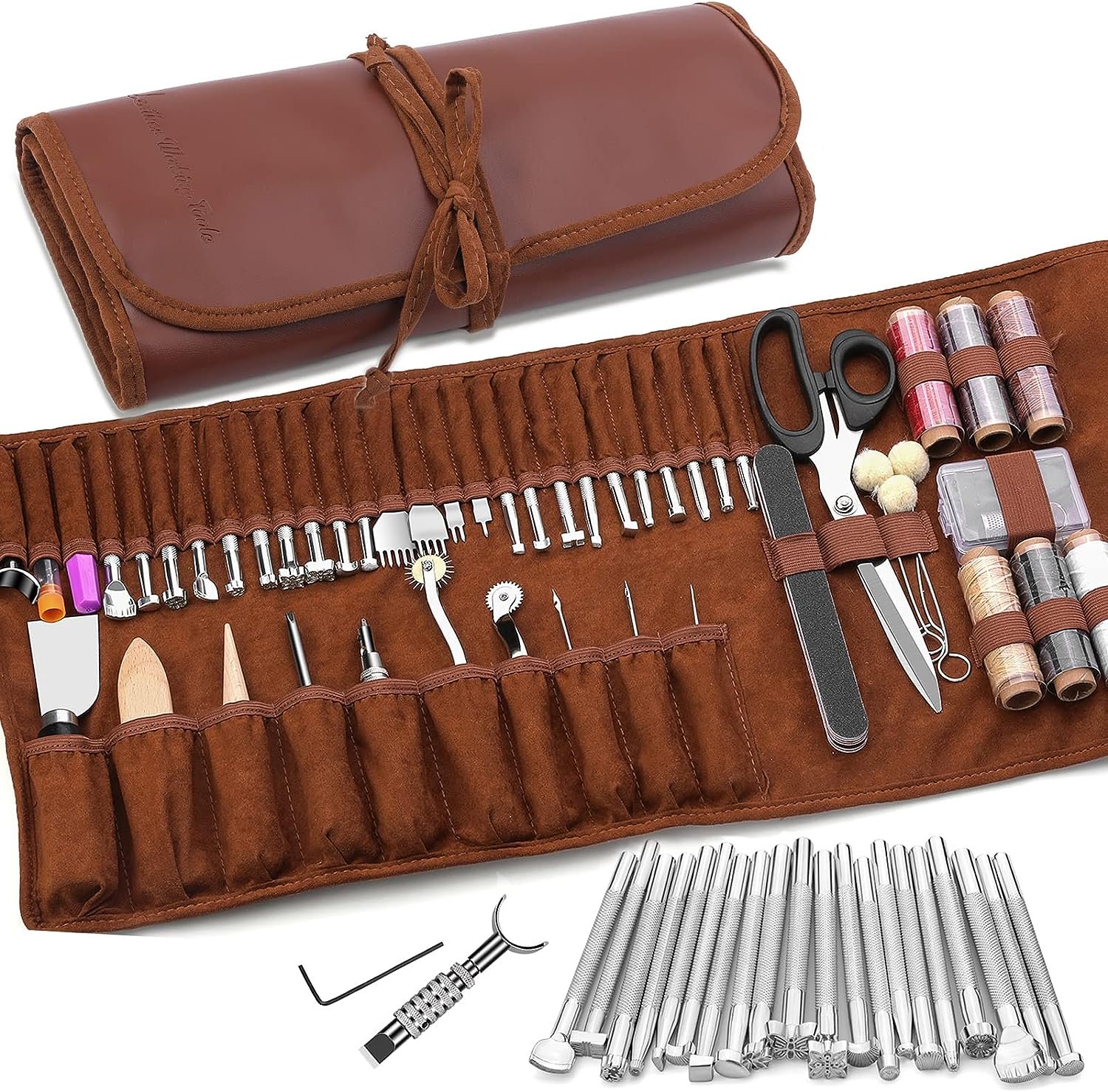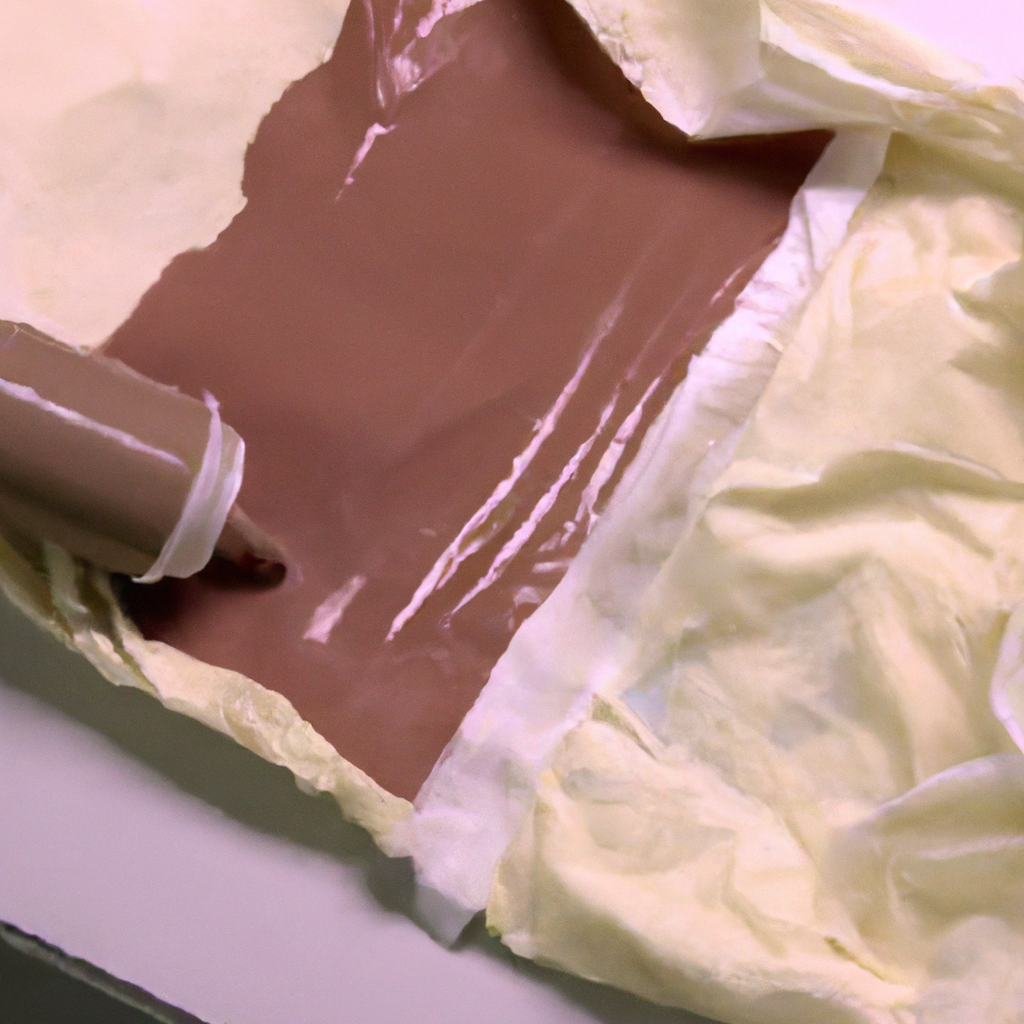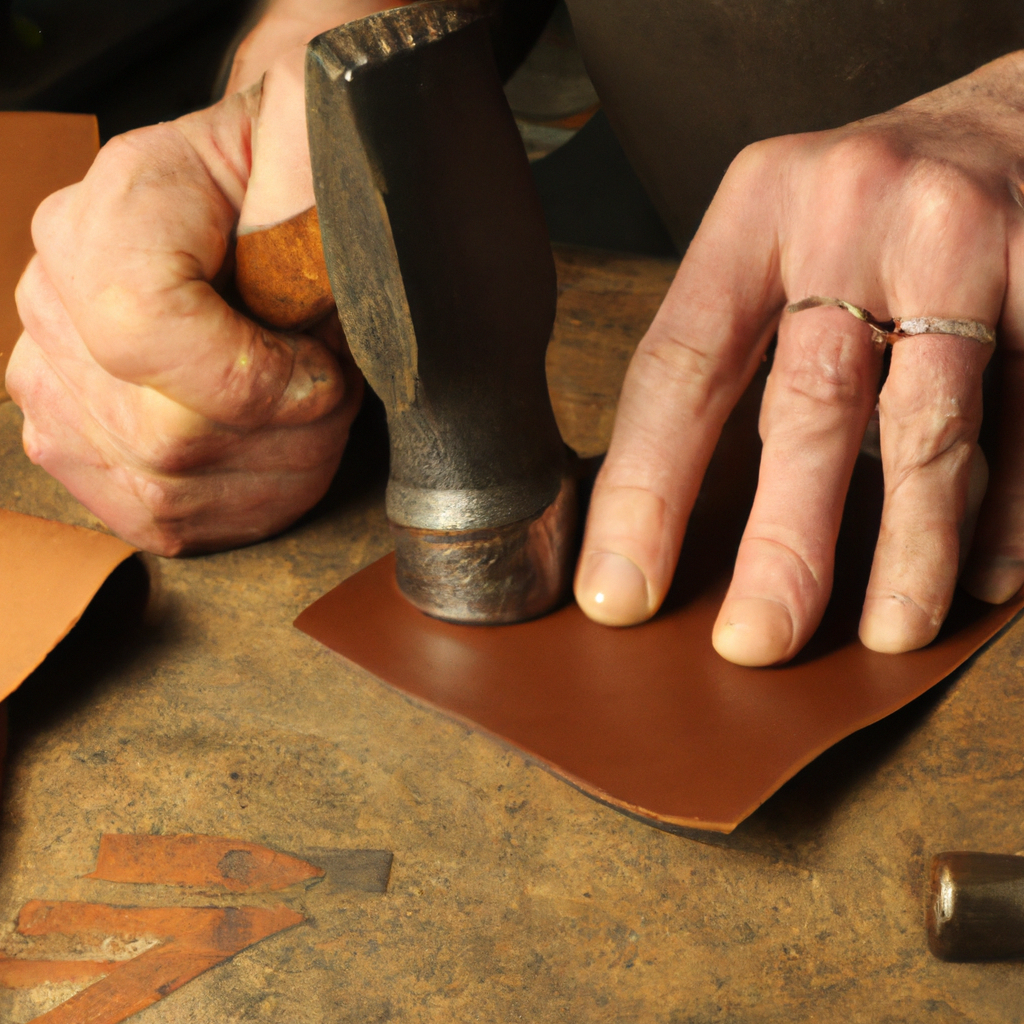If you love working with leather and have some ongoing projects or leftover materials, it’s essential to know the proper way to store them. Not only will this help you keep your leather projects in excellent condition, but it will also ensure that your unused materials stay in top shape for future use. In this article, we’ll explore different techniques and tips to help you store your leather projects and materials effectively, so you can enjoy working with leather for years to come. Whether you’re a seasoned leatherworker or just starting out, these storage methods will help keep your leather creations in pristine condition.

Choosing the Right Storage Method
Consider the Type of Leather
When it comes to storing your leather projects or unused materials, it’s important to consider the type of leather you are dealing with. Different types of leather require different care and storage methods. For example, full-grain leather is more durable and resistant to damage, while suede leather is more delicate and prone to staining. By understanding the type of leather you have, you can choose a storage method that best suits its specific needs.Evaluate the Climate and Environment
The climate and environment in which you live play a significant role in determining the storage method for your leather projects. Leather can be affected by temperature, humidity, and exposure to light. If you live in a humid climate, for example, you may need to take extra precautions to prevent mildew or mold growth. Similarly, if you live in an area with extreme temperatures or high levels of sunlight, you’ll need to protect your leather from the damaging effects of heat and UV rays.Protect From Light and Moisture
Light and moisture can both be detrimental to leather. Prolonged exposure to sunlight can cause the leather to fade and deteriorate over time. It’s best to store your leather projects in a cool, dark place to minimize the risk of damage. Additionally, moisture can cause leather to mold or crack. To protect your leather from moisture, consider using airtight containers or storing it in a climate-controlled space.Avoid Extreme Temperatures
Extreme temperatures can have a negative impact on leather. Leather can dry out and become brittle in hot, dry conditions, while extreme cold can cause the leather to stiffen and even crack. To avoid any potential damage, it’s essential to store your leather projects in an environment where the temperature remains stable, ideally between 60-70 degrees Fahrenheit.Prevent Dust and Dirt Build-Up
Dust and dirt can accumulate on the surface of leather, leading to scratches and stains. It is important to protect your leather from these elements by storing it in a clean and dust-free environment. Consider using storage options that offer a barrier against dust, such as airtight containers, individual storage bags, or leather storage boxes. Regularly dusting and cleaning your leather will also help maintain its condition during storage.Preparing Leather Projects for Storage
Clean and Condition the Leather
Before storing your leather projects, it’s crucial to clean and condition them properly. Use a mild leather cleaner or saddle soap to remove any dirt or stains from the surface of the leather. After cleaning, apply a leather conditioner to keep the leather moisturized and prevent it from drying out during storage. Conditioning the leather will help maintain its flexibility and prevent cracking over time.Remove Any Attached Hardware
If your leather projects have any attached hardware, such as buckles or zippers, it’s advisable to remove them before storing. Hardware can cause indentations or scratches on the leather if left attached for an extended period. By removing the hardware, you can prevent any potential damage and ensure the leather remains in optimal condition while in storage.Do Not Store Unfinished Projects
It may be tempting to store unfinished leather projects, thinking that it will be easier to pick up where you left off. However, unfinished leather projects are more susceptible to damage and can be negatively affected by prolonged storage. Moisture, dust, or even insects can cause irreversible damage to unfinished leather. It is best to complete your projects before storing them to maintain their overall quality and prevent any unwanted surprises later on.Allow Sufficient Drying Time
Before storing your leather projects, ensure that they are completely dry. Moisture trapped within the leather can lead to mold or mildew growth during storage. After cleaning or conditioning the leather, allow it to air dry thoroughly before packing it away. This simple step will help maintain the integrity and quality of the leather over time.Consider Using Leather Protector
To provide an extra layer of protection for your leather projects, you may want to consider using a leather protector. Leather protectors help repel moisture and guard against stains and spills. Apply the leather protector following the product instructions and allow it to dry completely before storing your projects. This additional measure can help safeguard your leather and prolong its lifespan.
Storage Options for Leather Projects
Using Airtight Containers
Airtight containers offer excellent protection for your leather projects by creating a barrier against dust, light, moisture, and pests. Choose a container that is large enough to accommodate your projects without folding or bending them. Line the container with acid-free tissue paper before placing your leather items inside. This will help absorb any excess moisture and provide extra cushioning.Individual Storage Bags
For smaller leather projects or items, individual storage bags can be an effective storage solution. Opt for bags made of breathable materials, such as cotton or canvas, to allow some air circulation and prevent moisture buildup. Avoid using plastic bags, as they can trap moisture and lead to mold growth. Place each item in a separate bag to prevent scratching or damage caused by rubbing against other items.Hanging Storage Racks
If you have larger leather projects, such as jackets or coats, consider using hanging storage racks. These racks allow the leather to hang freely, preventing creases and maintaining the item’s shape. Choose a rack made of sturdy materials and avoid overcrowding the rack to prevent any strain on the leather. Ensure the storage area is clean and free from moisture to protect the leather from any potential damage.Leather Storage Boxes
Leather storage boxes offer an elegant and secure solution for storing your leather projects. These boxes are specifically designed to provide proper ventilation and protection. Look for boxes made of acid-free and moisture-resistant materials to safeguard your leather from any potential harm. Use acid-free tissue paper or cotton fabric to line the boxes before placing your projects inside, creating an extra layer of protection.Inside Wardrobe or Closet
If you have sufficient space, storing your leather projects inside a wardrobe or closet can be a convenient option. Choose a closet or wardrobe away from direct sunlight and ensure the area is well-ventilated. Hanging your leather garments on padded hangers can help maintain their shape. For smaller leather accessories or projects, you can utilize storage bins or shelves within the wardrobe to keep them organized and easily accessible.Storing Leather Unused Materials
Organizing Small Leather Pieces
Unused leather materials can sometimes accumulate, making it necessary to find effective storage solutions. Start by organizing your smaller leather pieces. Sort them by color, size, or type to make it easier to find what you need when the time comes. Utilize small bins or boxes to keep different categories separate and prevent pieces from getting misplaced or damaged.Utilizing Plastic Storage Bins
Plastic storage bins can be a practical and cost-effective option for storing unused leather materials. Look for bins that are large enough to accommodate your leather pieces without folding or bending them. To prevent any moisture buildup, choose bins with tight-fitting lids or consider using airtight containers similar to those used for storing leather projects. Line the bins with acid-free tissue paper or cotton fabric to add a protective layer.Labeling and Categorizing
To keep your unused leather materials organized, labeling and categorizing them is essential. Use adhesive labels or markers to identify the contents of each storage bin or box. You can also consider creating an inventory list or catalog with detailed descriptions of your leather materials. This way, you’ll be able to quickly locate specific pieces without having to search through all your stored materials.Stackable Storage Containers
To optimize your storage space, consider using stackable storage containers. These containers allow you to easily stack multiple bins or boxes on top of each other, saving valuable floor space. Look for containers with sturdy construction and secure lids to prevent any accidental spillage or damage. Stackable containers are an efficient way to keep your unused leather materials neatly organized and easily accessible.Avoiding Direct Sunlight
When storing your unused leather materials, avoid placing them in direct sunlight. Prolonged exposure to sunlight can cause fading and deterioration of the leather over time. Find a storage location away from windows or use curtains or blinds to block out any direct sunlight. By keeping your leather materials in a dark and cool area, you can help preserve their quality and ensure they remain in optimal condition.Avoiding Common Mistakes
Preventing Creases and Wrinkles
Creases and wrinkles can significantly affect the appearance of leather. When storing your leather projects, take care to avoid folding them in a way that could cause permanent creases. Opt for storage solutions, such as hanging racks or flat containers, that allow the leather to retain its natural shape. Avoid placing heavy objects on top of folded leather items to prevent unnecessary pressure or stress on the leather.Using Acid-Free Tissue Paper
To protect your leather projects from discoloration or damage, use acid-free tissue paper when wrapping or lining them in storage containers. Acid-free tissue paper is pH-neutral and will not transfer any harmful chemicals or acids onto the leather. The tissue paper will act as a buffer against moisture and help maintain the leather’s condition during storage.Avoiding Folding or Hanging Heavy Items
Avoid folding or hanging heavy items, such as leather coats or jackets, for extended periods without proper support. Over time, the weight of the item can cause stretching or distortion of the leather. If you need to store heavier leather items, use padded hangers or provide additional support, such as stuffing the sleeves or body of the garment. This will help distribute the weight and minimize any potential damage.Keeping Leather Flat
Maintaining the flatness of your leather projects is crucial to preventing unwanted creases or warping. If you choose to lay your leather projects flat, use acid-free tissue paper or cotton fabric to cushion and protect the leather’s surface. Ensure the storage area is clean and dust-free to prevent any particles from scratching the leather. Regularly check on your stored items to make sure they remain flat and undisturbed.Securing or Padding Hardware
If your leather projects have any hardware, such as clasps or buckles, take measures to protect both the hardware and the leather. Secure loose hardware to prevent it from scratching or indenting the leather during storage. You can use foam padding or even wrap the hardware in acid-free tissue paper to provide an extra layer of protection. By taking these precautions, you can ensure that both the leather and hardware remain in optimal condition.Maintaining Proper Temperature and Humidity
Ideal Temperature for Leather Storage
Maintaining a stable temperature is crucial for the long-term storage of leather projects. The ideal temperature range for leather storage is between 60-70 degrees Fahrenheit. Extreme fluctuations in temperature can cause the leather to expand and contract, leading to cracking or warping. Be mindful of the storage location, ensuring it maintains a moderate and consistent temperature.Avoiding High Humidity Levels
High humidity levels can be harmful to leather, as they can promote mold and mildew growth. It is crucial to store your leather projects in an environment with moderate humidity levels. If you live in a humid climate, consider using dehumidifiers or desiccants to absorb excess moisture in the storage area. These measures will help protect your leather from damage caused by high humidity.Using Dehumidifiers or Desiccants
Dehumidifiers or desiccants can be an effective way to control humidity levels in your storage space. Dehumidifiers help remove moisture from the air, maintaining a more stable and suitable environment for storing leather. Desiccant packets, commonly filled with silica gel, can be placed in storage containers to absorb any moisture that may be present. These moisture-absorbing methods will help prevent mold, mildew, and other damage caused by high humidity.Considering Climate-Controlled Spaces
For those with valuable or fragile leather projects, storing them in a climate-controlled space can offer the ultimate protection. Climate-controlled storage units maintain a stable temperature and humidity level, ensuring the optimal conditions for leather storage. These units often come equipped with heating, cooling, and dehumidifying systems, preventing any fluctuations that could damage the leather. While this option may come at an additional cost, it offers peace of mind and the highest level of protection for your leather projects.Avoiding Damp or Wet Locations
Leather and moisture do not mix well. Avoid storing your leather projects in damp or wet locations, such as basements or attics prone to leaks. Moisture can lead to mold, mildew, and irreversible damage to the leather. If you must store leather in these areas, take extra precautions such as using dehumidifiers, proper insulation, and stacking items above floor level to prevent contact with any potential water sources.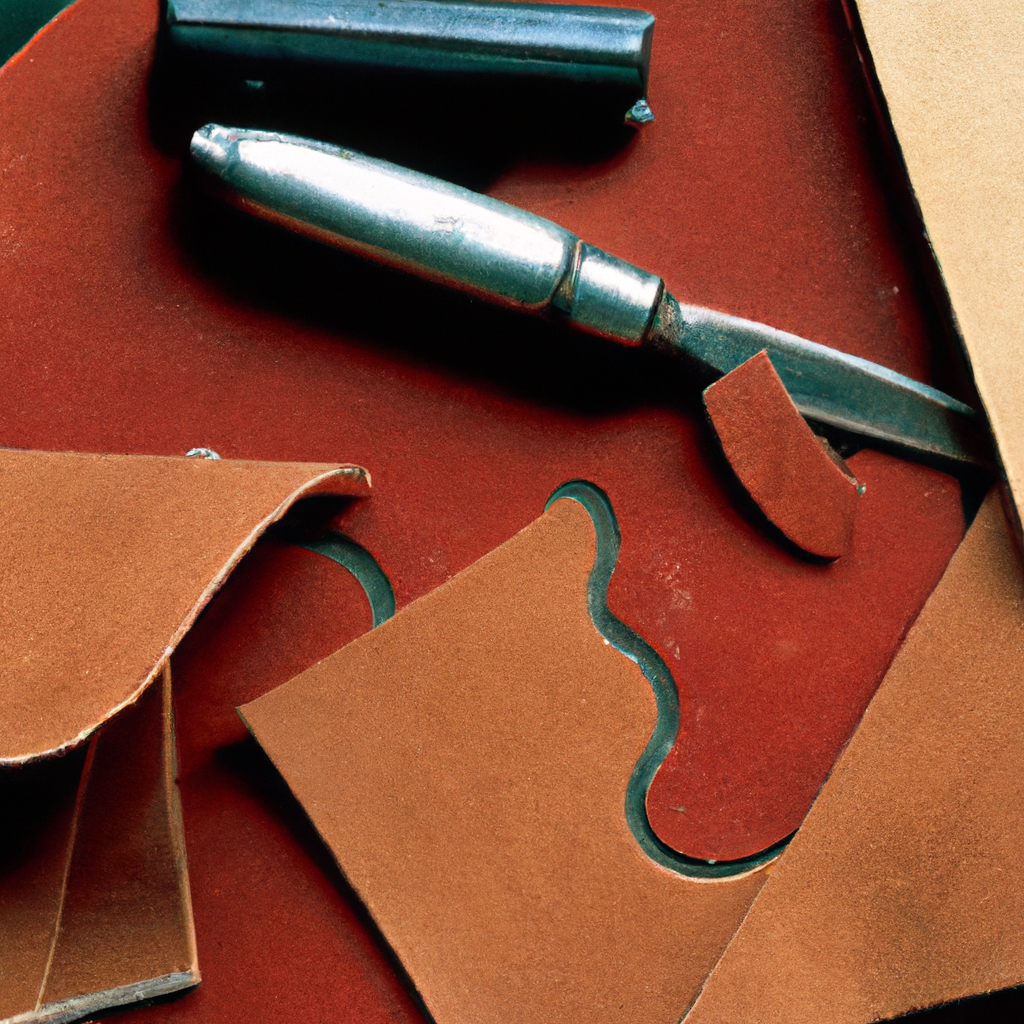
Checking and Rotating Storage Regularly
Inspecting for Mold or Mildew Growth
Regularly inspect your leather projects for any signs of mold or mildew growth. Mold can appear as fuzzy patches or discoloration on the surface of the leather. If you notice any signs of mold or mildew, it’s crucial to handle the affected items immediately. Remove the affected leather from storage, gently brush off any visible mold, and clean the surface using a mild leather cleaner. If the mold growth is extensive or has affected the leather’s integrity, it may be best to seek professional help to salvage or replace the affected pieces.Checking for Insect Infestations
Leather can be attractive to insects, such as moths or beetles, which can cause irreparable damage. Regularly check your stored leather projects for any signs of insect infestations, such as small holes or larvae. If you detect any infestations, take immediate action to prevent further damage. This may include freezing or heat-treating the affected items to kill any larvae or insects. Additionally, consider using natural deterrents, such as cedar blocks or lavender sachets, to help repel insects and protect your leather.Rotating Leather Projects Regularly
To prevent any damage caused by prolonged storage, it’s advisable to rotate your leather projects regularly. Simply removing them from storage and exposing them to fresh air can help prevent moisture buildup and keep the leather conditioned. Rotating your leather projects every few months will also give you an opportunity to inspect them for any signs of damage or deterioration, enabling you to address any issues promptly.Checking Leather Condition
Regularly check the condition of your stored leather projects to ensure they remain in optimal shape. Look for any signs of cracking, fading, or deterioration. If you notice any changes, take the necessary steps to address them, such as applying leather conditioner or seeking professional restoration services. Timely interventions can help extend the lifespan of your leather projects and ensure their continued enjoyment.Monitoring Storage Environment
While your leather projects are in storage, it’s important to monitor the storage environment to ensure ideal conditions are maintained. Keep an eye on factors such as temperature, humidity levels, and exposure to light. Regularly check for any signs of deterioration or damage on your leather projects. By actively monitoring the storage environment, you can take proactive steps to maintain the quality and longevity of your leather items.Long-Term Storage Tips
Maintaining Regular Leather Care
Even during long-term storage, it’s essential to regularly care for your leather projects. Depending on the usage and storage conditions, leather may require additional cleaning or conditioning interventions. Dusting off the surface of the leather and applying a leather conditioner periodically will help keep the leather moisturized and prevent it from drying out or cracking. Regular care can help prevent any potential damage or deterioration during storage.Reconditioning Over Time
Over extended periods of storage, leather may lose some of its moisture and natural oils. To combat this, consider reconditioning your leather projects periodically. Applying a leather conditioner will help restore the moisture and flexibility of the leather, ensuring it remains supple and resistant to cracking. Follow the product instructions and test any conditioner on a small, inconspicuous area of the leather before applying it to the entire item.Avoiding Exposure to Household Chemicals
While in storage, it’s crucial to protect your leather projects from exposure to household chemicals. Cleaning products, solvents, or even perfume can contain chemicals that may discolor or damage the leather. Keep leather items away from these substances, and avoid stacking or storing them near areas where volatile chemicals are used or stored. By avoiding exposure to household chemicals, you can maintain the original color and quality of your leather projects.Periodic Spot Cleaning
During prolonged storage, leather may occasionally develop spots or stains. Promptly addressing these spots can help prevent them from setting in and becoming more challenging to remove later. Use a mild leather cleaner or specialized spot remover to clean affected areas, following the instructions provided. It’s important to test any cleaning product on a small, inconspicuous area of the leather first to ensure it doesn’t cause any discoloration or damage.Monitoring Storage Conditions
Throughout the long-term storage of your leather projects, continue monitoring the storage conditions to maintain optimal care. Regularly check the temperature, humidity levels, and exposure to light. Inspect your stored leather items for any signs of damage, pest infestations, or mold. By staying vigilant and addressing any issues promptly, you can ensure that your leather projects remain in the best possible condition during long-term storage.Consider Professional Storage Services
Benefits of Professional Leather Storage
If you have valuable or delicate leather projects and want to ensure their utmost protection, consider professional leather storage services. These services specialize in storing and caring for high-end or fragile items and can provide the ideal environment for your leather projects. Professional storage facilities often offer climate-controlled units, advanced security measures, and insurance coverage, giving you peace of mind that your leather projects are in trusted hands.Climate-Controlled Storage Units
Professional storage services typically provide climate-controlled storage units specifically designed to maintain stable temperature and humidity levels. These units help prevent damage caused by extreme temperatures, high humidity, or fluctuations in the environment. Climate-controlled storage is particularly beneficial for delicate or valuable leather projects that require optimum conditions to ensure their longevity.Insurance and Security Measures
One of the advantages of professional storage services is the added security provided for your leather projects. These facilities often have advanced security measures in place, including surveillance cameras, controlled access, and alarm systems. Additionally, many professional storage services offer insurance coverage for stored items, providing financial protection against theft, damage, or loss. This added security and insurance coverage can give you peace of mind knowing that your leather projects are well-protected.Access and Convenience
Professional storage services usually offer convenient access to your stored items whenever you need them. With flexible access hours and the ability to retrieve your leather projects at any time, these services provide ease and convenience. If you frequently use or rotate your leather projects, the accessibility of professional storage services can make it easier for you to maintain and enjoy your collection.Specialized Leather Care
Some professional storage services offer specialized leather care, including cleaning, conditioning, and restoration services. These services can help revive and rejuvenate your leather projects if they require any attention. Professional leather care technicians can assess the condition of your stored items and provide the necessary treatments to maintain or restore their original quality. By utilizing these specialized services, you can ensure that your leather projects receive the utmost care and attention they deserve.Does Proper Storage of Leather Items Affect the Quality of Product Photos?
Yes, proper storage of leather items does affect the quality of taking product photos leather items. Storing leather in a dry, cool, and well-ventilated area preserves its quality, preventing it from becoming cracked, faded, or damaged. This ensures that the product photos will clearly showcase the item’s true quality and beauty.

